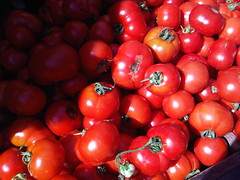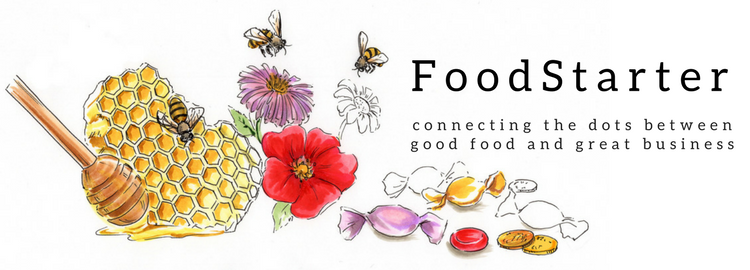The California Small Farm Conference brought together growers, farmers market managers, and government entities to share behind the scenes insight from several successful small farms who have run CSA (Community Supported Agriculture) programs. The main goal of a CSA is to get farm-fresh products to people – vs. the people going to the market – with minimal time and energy on everyone’s part.
You can download the conference presentations.
CSA Tips from California Farms
Tom Broz from Live Earth Farm (Watsonville, CA) said goodbye to city life ala Green Acres, went through UCSC’s eco farming program, and found some land 16 years ago with a goal of raising his family in the country and growing healthy food. After starting with 2 farmer’s markets and the CSA, today Life Earth Farm has 60 acres and 800 CSA customers.
As his customer base grew, Life Earth gave up pen and paper for tracking and adopted Farmigo software, developed specifically for managing CSAs. The software gives customers choices about what to include in boxes and set vacation schedules etc, as well as make it easy to comply with governmental rules surrounding CSAs.
TIP: Produce as much as you can yourself, such as compost, to be more efficient and reduce costs.
Fellow recovering city slicker Shawn Seufert of Terra Bella Farm (Pleasanton, CA) had only recently heard of chard and kale when he started his farm. The CSA began old school style on a shoestring: He traveled door to door, introducing  himself. Now 300 families buy their produce, farmed on 7 acres.
himself. Now 300 families buy their produce, farmed on 7 acres.
TIP: Small upgrades in customer experience make a big difference: They invested in nice wood rustic stands at the farm store, which boosted sales.
Thomas Nelson of Capay Valley Farm Shop (Guinda, CA) started a farm shop in 2008, with the idea of an artisan marketplace on Hwy 80. The store lasted less than a year but in the meantime they’d put together the infrastructure for farms to work together cooperatively.
They had been approached by the product design company Ideo who wanted to get closer to farmers (or for the farmers to get closer to them). The idea was for Capay to stop at farms, pick up product, and end up in Palo Alto where they’d set up a private farmer’s market with a CSA. The city of Palo Alto took notice and loved the idea so much, they set up outside of city hall for employees. This led to a model for targeting institutions with mini-farmers’ markets. (Learn more.)
TIPS:
1) Band together numerous farms to enable a wider variety of products – fruits, veges, eggs, olive oil, honey, meat products, grains, beans – year round.
2) For efficiency they now pack the farm shares centrally.
MY TIP: Involve subscribers in setting drop off points. In Palo Alto a CSA subscriber allows the farm to drop off boxes on her porch, for neighbors to come pick up. No muss, no cost, and gives locals an excuse to commune.
Other Interesting Ideas for Farms from the Conference
- Charitable co-packing: In the Bay Area, the Pacific Farmer’s Markets are working on a plan to train disadvantaged people (through a local nonprofit) how to process fresh fruits and veggies from the farmer’s market into canned foods that can then be sold by the farmers. Talk about a virtuous cycle!
- Funding from the FDA for Farm Grants to create value-added products: Download the presentations from the event for details on licensing, processing regulations, and other rules for farms creating products. It is truly a quagmire of exceptions and guidelines (such as, it’s a different registration if you store the product separately from where you make it.)Additionally the grants, which are project-based, can be expensive, requiring accounting oversight. Still totally worth it to get a major initiative off the ground.
- Finding rural commercial kitchens: Becky from Frog Hollow (Brentwood, CA) had a great idea for farmers to tap into restaurants in their communities who may have kitchen time to spare. The farms could hire the restaurants to make products using their produce or the farm could rent the space. (Everyone in the room had a huge chuckle when one grower said they “heard” it was OK to process farm food at home. Talk about California dreamin’! We all wish.)
 Approaching new stores to sell your produce: Jim Cochran of Swanton Berry Farm advised: “Never call someone and ask if they’d like to buy strawberries. Bring the box into the store unannounced and you get your reaction. If the first word is ‘How much do they cost?’ you’re not going to make a lot of progress. If they first say ‘Wow these are beautiful!’ that’s going to be a good customer. Also, it’s hard to give credit to a store when they ordered too much; but it’s to his advantage to give the store credit so they have fresh berries on hand.
Approaching new stores to sell your produce: Jim Cochran of Swanton Berry Farm advised: “Never call someone and ask if they’d like to buy strawberries. Bring the box into the store unannounced and you get your reaction. If the first word is ‘How much do they cost?’ you’re not going to make a lot of progress. If they first say ‘Wow these are beautiful!’ that’s going to be a good customer. Also, it’s hard to give credit to a store when they ordered too much; but it’s to his advantage to give the store credit so they have fresh berries on hand.
Overall this conference bringing together farms, experts, vendors, and advocates likely planted the seed (how could I help that) for future collaborations and farming success.






